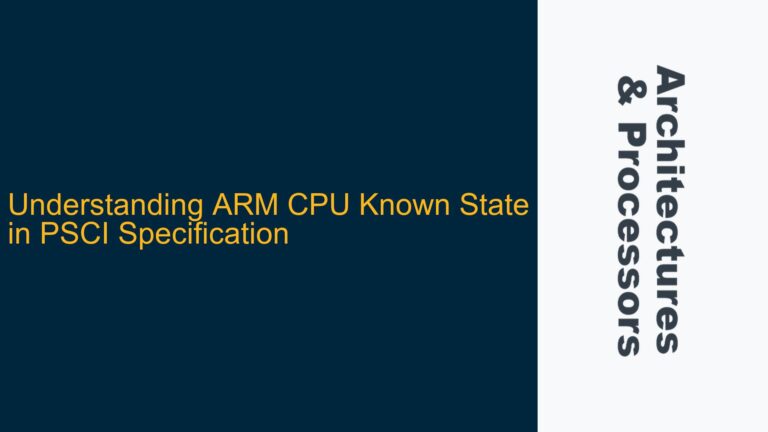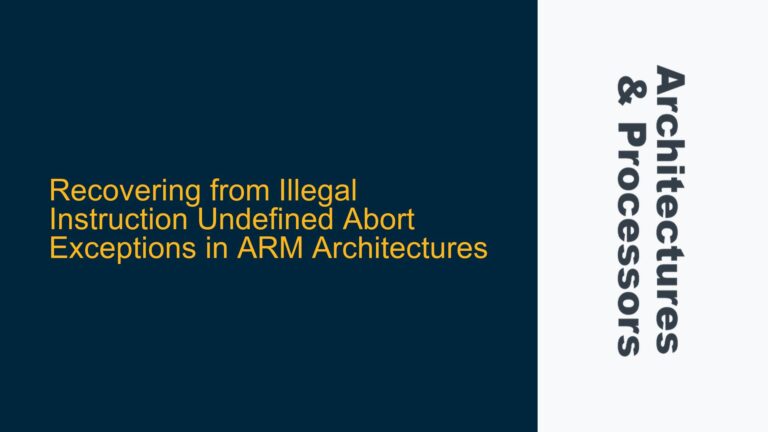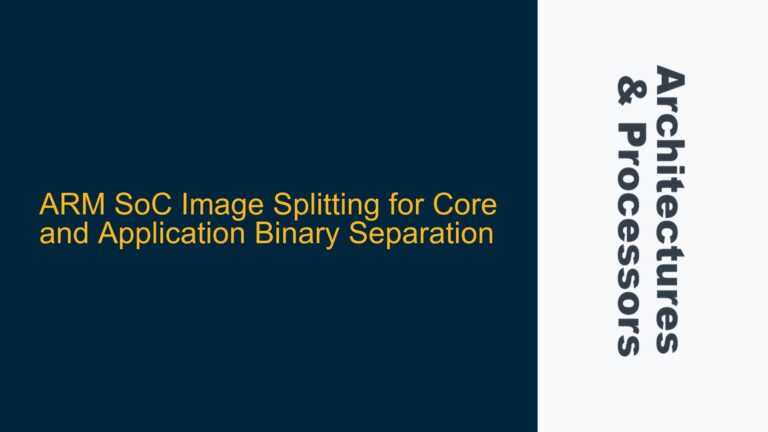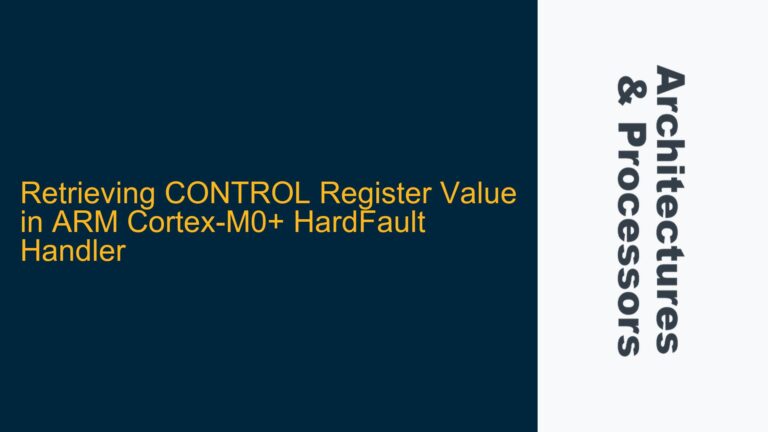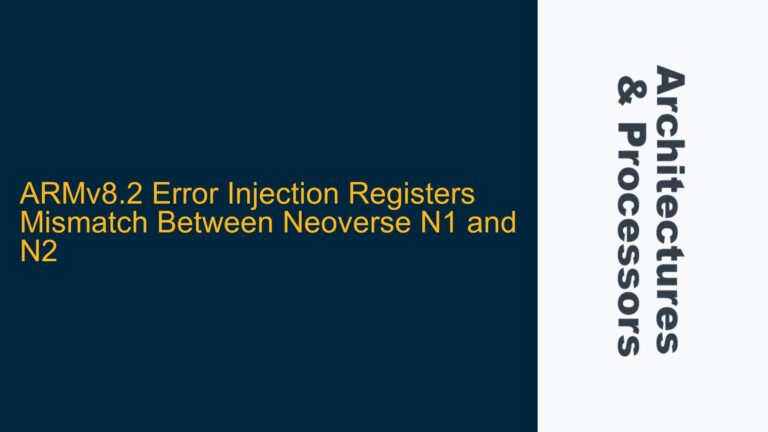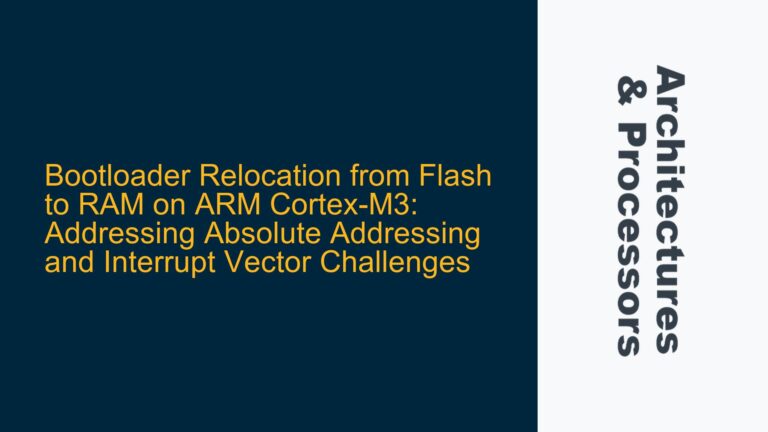Understanding the Need for Cycle-Accurate Simulation in ARM Cortex-M4
Cycle-accurate simulation is a critical requirement for developers and researchers working with ARM Cortex-M4 processors, particularly when optimizing firmware, analyzing performance bottlenecks, or validating real-time behavior. The Cortex-M4, with its Floating-Point Unit (FPU) and Digital Signal Processing (DSP) capabilities, is widely used in embedded systems where timing precision is paramount. However, achieving cycle-accurate simulation for the Cortex-M4 presents unique challenges due to the complexity of its architecture, the variability of its implementations across different boards, and the limitations of available simulation tools.
The primary goal of cycle-accurate simulation is to replicate the exact timing behavior of the processor, including instruction execution, memory access, and peripheral interactions. This level of accuracy is essential for tasks such as worst-case execution time (WCET) analysis, real-time system validation, and performance optimization. However, many simulation tools, including popular options like QEMU, fall short of providing true cycle accuracy, especially for specialized features like the FPU and DSP instructions. This gap necessitates a deeper exploration of the available tools, their limitations, and potential solutions.
Limitations of QEMU and Commercial Simulators for Cortex-M4 Cycle Accuracy
QEMU, a widely used open-source emulator, is often the first choice for developers due to its flexibility and support for a wide range of architectures. However, QEMU is not cycle-accurate, particularly for the ARM Cortex-M4. Its primary focus is on functional emulation, meaning it replicates the logical behavior of instructions but does not model the exact timing of their execution. This makes QEMU unsuitable for tasks requiring precise cycle counts, such as real-time system validation or performance analysis.
Commercial simulators, such as ARM DS-5 and Keil MDK, offer more advanced features but still have limitations. While these tools provide robust debugging and profiling capabilities, they do not always guarantee cycle accuracy. For instance, Keil MDK-Lite, a free version of Keil MDK, is limited to 32 KB of code and lacks cycle-accurate simulation. Similarly, ARM DS-5, despite its comprehensive toolchain, does not include a cycle-accurate simulator for the Cortex-M4. This leaves developers in a difficult position, as they must either invest in expensive proprietary solutions or rely on less accurate tools.
The challenge is further compounded by the variability of Cortex-M4 implementations across different boards. Each board may have unique memory configurations, peripheral setups, and timing characteristics, making it difficult to create a one-size-fits-all simulation solution. This variability underscores the need for a simulator that can be customized to match the specific characteristics of the target hardware.
Exploring ARM CPAK and Other Cycle-Accurate Solutions
One promising solution for cycle-accurate simulation of the Cortex-M4 is ARM’s Cycle-Accurate Processor Simulation Kit (CPAK). CPAK provides a highly accurate simulation environment that models the timing behavior of the Cortex-M4 down to the cycle level. This makes it an invaluable tool for developers who need precise timing information for their applications. However, CPAK is not freely available, and access is typically restricted to commercial users or academic researchers who can demonstrate a legitimate need for the tool.
For students and researchers, obtaining access to CPAK can be a challenging process. As highlighted in the discussion, even after requesting access, there can be delays in receiving the necessary licenses and instructions. This highlights the need for more accessible solutions, particularly for academic users who may not have the resources to invest in commercial tools.
In addition to CPAK, other commercial simulators like Wind River Simics offer cycle-accurate simulation capabilities. Simics is a full-system simulator that can model the behavior of complex embedded systems, including the Cortex-M4. However, like CPAK, Simics is a commercial product with a significant cost barrier. This makes it less accessible for individual developers or small research teams.
Practical Steps for Achieving Cycle-Accurate Simulation
Given the limitations of existing tools, developers and researchers must adopt a multi-faceted approach to achieve cycle-accurate simulation for the Cortex-M4. The following steps outline a practical strategy for addressing this challenge:
-
Evaluate Available Tools: Begin by assessing the capabilities of available simulation tools, including QEMU, Keil MDK, ARM DS-5, and CPAK. Determine which tools offer the closest approximation to cycle accuracy and whether they support the specific features of the Cortex-M4, such as the FPU and DSP instructions.
-
Leverage Hardware Counters: If access to a cycle-accurate simulator is not feasible, consider using the hardware counters available on the Cortex-M4. The Data Watchpoint and Trace (DWT) unit provides cycle-accurate timing information that can be used to measure the execution time of code segments. While this approach requires access to the actual hardware, it can provide highly accurate results without the need for simulation.
-
Custom Simulation Models: For advanced users, creating custom simulation models may be an option. This involves developing a cycle-accurate model of the Cortex-M4 using a hardware description language (HDL) or a simulation framework like SystemC. While this approach requires significant expertise and effort, it allows for complete control over the simulation environment and can be tailored to match the specific characteristics of the target hardware.
-
Collaborate with ARM and Academic Institutions: For academic researchers, collaborating with ARM or academic institutions that have access to cycle-accurate simulation tools can be a viable option. Many universities have partnerships with ARM that provide access to tools like CPAK for research purposes. Additionally, reaching out to ARM’s support team or community forums can help expedite the process of obtaining access to these tools.
-
Combine Simulation and Hardware Testing: In cases where cycle-accurate simulation is not possible, combining simulation with hardware testing can provide a more comprehensive understanding of the system’s behavior. Use simulation for initial development and debugging, and then validate the results on actual hardware using hardware counters or other timing measurement techniques.
Conclusion
Achieving cycle-accurate simulation for the ARM Cortex-M4 is a complex but essential task for developers and researchers working on real-time embedded systems. While tools like QEMU and commercial simulators offer valuable capabilities, they often fall short of providing the level of accuracy required for precise timing analysis. ARM’s CPAK and other commercial solutions like Simics offer more accurate simulation environments but come with significant cost and accessibility barriers.
For those unable to access these tools, leveraging hardware counters, developing custom simulation models, and combining simulation with hardware testing are practical alternatives. By adopting a multi-faceted approach and collaborating with ARM and academic institutions, developers can overcome the challenges of cycle-accurate simulation and achieve the precision needed for their applications.
| Tool | Cycle Accuracy | FPU/DSP Support | Accessibility | Cost |
|---|---|---|---|---|
| QEMU | No | Limited | Open-source | Free |
| Keil MDK-Lite | No | Yes | Free (32 KB limit) | Free |
| ARM DS-5 | No | Yes | Commercial | High |
| ARM CPAK | Yes | Yes | Restricted | High |
| Wind River Simics | Yes | Yes | Commercial | High |
| Custom Simulation | Yes | Yes | Requires expertise | Variable |
This table summarizes the key characteristics of the tools discussed, providing a quick reference for developers evaluating their options for cycle-accurate simulation of the ARM Cortex-M4.

